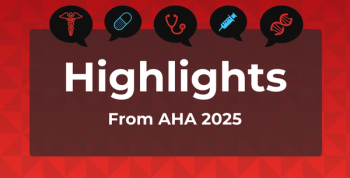
Phase 3 Trials Show Lilly’s Tirzepatide Reduces A1C, Body Weight Among Patients With T2D
The SURPASS program, which consists in part of SURPASS-3 and SURPASS-5, is testing the efficacy and safety of tirzepatide, a novel investigational once-weekly dual glucose-dependent insulinotropic polypeptide and glucagon-like peptide-1 receptor agonist.
Results of 2 phase 3 trials showed Eli Lilly’s tirzepatide significantly reduced glycated hemoglobin (A1C) and body weight among adults with type 2
“In preclinical models, GIP has been shown to decrease food intake and increase energy expenditure therefore resulting in weight reductions, and when combined with a GLP-1 receptor agonist, may result in greater effects on glucose and body weight,” according to a
Tirzepatide functions by integrating the actions of both incretins into a single molecule and represents a new class of medicines studied for T2D treatment.
SURPASS-3, which lasted 52 weeks and compared the treatment with titrated insulin degludec, found the highest dose of tirzepatide (15 mg) reduced A1C by 2.37% and body weight by 12.9 kg or 13.9%. The 40-week SURPASS-5 trial compared tirzepatide with placebo while both were add-ons to titrated insulin glargine. In the latter trial, 15 mg of tirzepatide reduced A1C by 2.59% and body weight by 10.9 kg (11.6%) from baseline.
Furthermore, when receiving the highest dose, 62.4% of SURPASS-5 trial participants achieved an A1C of less than 5.7%. These participants had a mean duration of diabetes of 13.3 years. Both studies found the treatment’s safety profile was similar to the GLP-1 receptor agonist class, as gastrointestinal adverse events (nausea, diarrhea, vomiting) were most commonly reported and decreased as dosing continued.
The findings come just after newly
“Significantly lowering A1C levels and weight are high priorities throughout the T2D treatment journey, and the results we have seen from three SURPASS studies to date fuel our belief in tirzepatide's ability to meet those needs,” said Mike Mason, president of Lilly Diabetes.
Overall, the SURPASS program has enrolled more than 13,000 individuals with T2D across 10 clinical trials, 5 of which are global registration studies. Full results are expected to be announced later this year.
SURPASS-3 assessed 3 doses of tirzepatide (5 mg, 10 mg, and 15 mg) among patients with inadequate glycemic control on stable doses of metformin with or without a sodium-glucose cotransporter-2 (SGLT-2) inhibitor. All 1444 participants were insulin-naïve and had a mean duration of diabetes of 8.4 years, a baseline A1C of 8.17%, and a baseline weight of 94.3 kg. After 52 weeks, researchers found:
- All 3 tirzepatide doses led to superior A1C and body weight reductions compared with titrated insulin degludec (mean dose at 52 weeks was 48.8 units per day).
- Across the 3 doses, up to 92.6% of participants on tirzepatide achieved an A1C of less than 7% (the American Diabetes Association [ADA] recommended target for people with diabetes).
- Up to 48.4% of participants treated with tirzepatide achieved an A1C of less than 5.7%.
- Hypoglycemia less than 54 mg/dL (level 2) was reported in 1.4% (5 mg), 1.1% (10 mg), and 2.2% (15 mg) of participants in the tirzepatide arms and in 7.3% of participants in the insulin degludec arm.
- Treatment discontinuation rates due to adverse events were 7.2% (tirzepatide 5 mg), 9.7% (tirzepatide 10 mg), and 10.9% (tirzepatide 15 mg), compared with 1.4% (insulin degludec).
A total of 475 participants were randomized 1:1:1:1 in SURPASS-5 with a baseline mean A1C of 8.31%, weight of 95.2 kg, and insulin glargine dose of 37.6 units per day. Analyses revealed that after 40 weeks:
- All 3 doses of tirzepatide demonstrated superior A1C reductions and weight reductions from baseline compared with placebo.
- Across the 3 doses, up to 97.4% of participants on tirzepatide achieved an A1C of less than 7%.
- Mean insulin glargine dose at 40 weeks was lower in all of the tirzepatide arms than in placebo and was 37.6 units per day (5 mg), 35.7 units per day (10 mg), 29.4 units per day (15 mg), and 58.8 units per day (placebo).
- Level 2 hypoglycemia was reported in 15.5% (5 mg), 19.3% (10 mg), and 14.2% (15 mg) of participants in the tirzepatide arms and in 12.5% of participants in the placebo arm.
- Treatment discontinuation rates due to adverse events (nausea, diarrhea, vomiting, constipation) were 6.0% (tirzepatide 5 mg), 8.4% (tirzepatide 10 mg), and 10.8% (tirzepatide 15 mg), compared with 2.5% (placebo).
Complete data from both studies have yet to be evaluated. They will be presented at the ADA’s 81st Scientific Sessions and published in a peer-reviewed publication in 2021. Tirzepatide is also being studied as a potential treatment for nonalcoholic steatohepatitis.
Newsletter
Stay ahead of policy, cost, and value—subscribe to AJMC for expert insights at the intersection of clinical care and health economics.









































